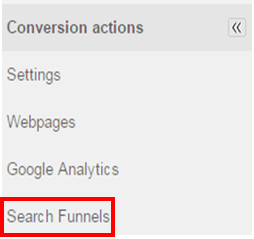Search Engine Optimization (SEO) is one of the most important aspects of yours (or anyone’s) online presence. Does your website measure up in 2016?
Google can be terrifying, with its surprise updates, algorithm changes and upheavals. Add to that the secretive nature of how Google communicates its updates, and you’ve got a recipe for confusion.
You can be prepared, though, with the right adjustments and precautions.
In fact, there are a few key developments from 2016 that you need to be aware of. We’ve highlighted some of them right here.
Being “Mobile-Friendly” Isn’t Enough
In March of 2015, Google announced plans to begin penalizing websites that didn’t have mobile compatibility:
“Starting April 21, we will be expanding our use of mobile-friendliness as a ranking signal. This change will affect mobile searches in all languages worldwide and will have a significant impact in our search results. Consequently, users will find it easier to get relevant, high quality search results that are optimized for their devices.”
If your website didn’t work for users on mobile, it would be significantly downgraded in Google results.
Companies started scrambling to make their websites compatible with a variety of devices and screen sizes, to get back the SEO juice they had before. Mobile compatibility became one of the defining issues of SEO in 2015, and many brands are just now fully adjusted to the mobile overhaul.
Cue 2016.
Like everything in life, SEO has continued to evolve this year…and the importance of mobile friendliness has, too.
According to Google, there are now more users on mobile devices than traditional computers or laptops. And the number is rising every day in 2016.
Now, not only does your site need to work on mobile, it needs to work well, and it needs to look good.
Marketing strategist and consultant Jeff Bullas outlines the importance of mobile-conscious design and layout in 2016:
“Apart from making your website both mobile friendly and responsive to all devices, you need to go a little further.
It means you need to have a mobile mindset for all of your website and product based decisions. Consider how your content will appear on a smartphone before finalizing your website, product pages, service pages and layouts.”
Not only do you need to have mobile compatibility, you also need to have mobile presentation. You need to give your mobile website visitors the same visual and user-friendly experience that they would receive on a traditional desktop or laptop.
This means:
- Re-designing your most important pages (making products larger and easier to see on mobile screens, etc)
- Sprucing up your page-load times
- Updating your mobile ecommerce capabilities so that mobile users can purchase from you more easily
- Designing for larger fingers (make things easily clickable)
- Optimizing your pages for local search
Whatever weaknesses your website has when it comes to be mobile, 2016 is the time to fix them.
Mobile is now where your customers are; design a website that considers their experience first.
Quality Backlinks Are Gold
Don’t let anyone tell you that backlinks are dead.
They’re actually more important than ever.
You see, search engines and algorithms like PageRank have developed an intuitive sense of link quality and will award (or punish) websites accordingly.
According to Moz’s biennial survey of the world’s top search marketers, quality of backlinks was one of the top characteristics of a high-performing website in 2015.
This means your website needs to have high-quality backlinks from authoritative, trusted sources. Black hat, spammy backlinks will do nothing, other than earn you some serious side-eye (and penalties) from Google’s algorithm. Backlink farms will make your website essentially invisible to Google’s crawlers.
To get backlinks that actually help your site in terms of SEO, you have to do some work.
Build relationships, create backlink campaigns that encourage reciprocity from trusted sources or build outreach calendars. Keep a list of relevant, authoritative sites and interact with them on social media. Build a rapport. It’s well worth your time.
Content Quality and Relevance Are King
2016 is the year to step up your site’s content. And no, this doesn’t mean stuffing keywords to try and trick Google’s algorithm or producing a boatload of blogs to increase your blog roll.
In 2016, Google expects quality content that its searchers will find useful. And its methods of discerning quality content from the dregs is more sophisticated than ever.
In fact, they have a small army of human raters that evaluate websites based on the quality and relevance of the content on their pages. There are some key ways to ensure that your site is up to snuff:
- Don’t duplicate content. Each page’s information needs to be unique.
- Produce content that is in-depth and offers useful information. Be an authority; prove to your website visitors (and Google) that you have information that they need and can use.
- Don’t overuse keywords. Repetition of keywords throughout a webpage or blog is not only annoying—it earns penalties from Panda. Write naturally, using pronouns and synonyms when necessary.
- Clear, intuitive navigation and page layout is also vital. Blocks of text are a bounce-rate killer. Bolding, numbering and bullets can also lend structure and scannability to your writing and content.
- When in doubt, make it substantial. Blogs or web pages with less than 400 words are not big performers when it comes to page views or Google’s algorithm.
It’s also important to register your website with Google Search Console, to ensure that you get updates and alerts when there are problems with your site’s performance.
Learning is a Requirement
Continuing your education is perhaps the most important part of staying ahead of the ever-changing SEO curve. Find great sources of information, subscribe to their blogs, and read their articles! Find eBooks and whitepapers that go more in depth; take quizzes to see if you have the knowledge you really need.
Digital & Social Articles on Business 2 Community
(65)







